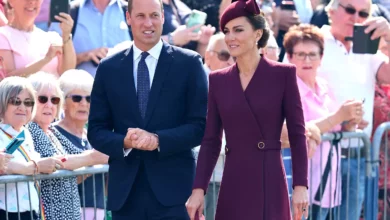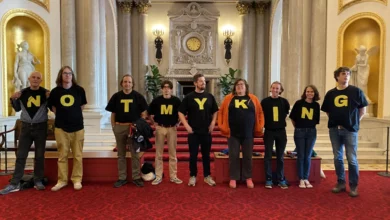London is a city bursting with artifacts and relics of Ancient Egypt, from Cleopatra’s Needle on the bank of the Thames to the dozens of mummies housed in the British Museum. It is, of course, the legacy of Britain’s colonial past, but it also represents an ongoing fascination with all things Ancient Egyptian.
The British Museum is the primary place in London to view the grandeur of an Egypt lost long ago to the sands of time. And it is always packed with tourists and students queuing up to marvel at the colossal stone heads of ancient kings and queens, the glistening mummy coffins, and even the gruesome sight of a preserved body. The museum is currently running a special exhibition on The Book of The Dead, a collection of spells on papyri dating back to 1600 BC, that promises visitors the chance to “follow the Ancient Egyptians’ journey from death into the afterlife."
The British Museum’s most controversial Egyptian object is the Rosetta Stone, who’s bilingual inscriptions provided the key to understanding hieroglyphics. Zahi Hawass, head of Egypt’s Supreme Council of Antiquities, has recently been campaigning to bring the prized possession home.
A very short walk down the road from the British Museum is its humble counterpart – the Petrie Museum of Egyptian Archaeology, located on the University College London (UCL) campus. Hidden away, the modest two room museum is overshadowed by the British Museum, but its collections should not be underestimated.
The Petrie Museum is the legacy of Sir William Matthew Flinders Petrie (1853-1942) who was the first Professor of Egyptian Archaeology at UCL. Many of the objects displayed were either excavated or acquired Petrie when he worked in Egypt between 1880 and 1924, and the museum boasts 80,000 pieces. The relics – only 10 percent of which are on display – are mainly from Egypt but also from Sudan. The cluttered cupboards and shelves are packed with pots of all shapes and sizes, jewelery, clothes, statues, inscribed and decorated stone slabs, and a couple of mummy coffins.
There is nothing of the drama of the British Museum’s stately collections that showcase the opulence of Egypt’s ancient dynasties, but it is the absence of the immense and the presence of the mundane that make the Petrie Museum so interesting. Curator Stephen Quirke, a lecturer of Egyptology at UCL, explained that “the colossal is not here and so people get their eye in and come asking questions in a completely different way…If you want to understand daily life you need to look at the regular as well as the precious.”
The Petrie Museum allows people a more intimate glimpse into the day to day life of the people these objects belonged to. This collection is full of simple reminders of human life, like tools and jewelery, that bring alive the average people that lived during the time of the pharaohs, without focus on the grandeur of the regimes that ruled them.
Because the museum was established in large part as a teaching and research resource, its focus is academic and not touristic; students survey the collections to critique and build on the knowledge they gain from the university library. But the museum is not just for students. It is free, open to all and often hosts events for the public, such as workshops for children and film screenings. The Petrie Museum’s main goal is to be a place for dialogue and open exchange between communities.
This idea, that a museum is a dynamic space for ideas and discussion, opposes the traditional approach whereby objects from long ago are displayed without attention paid to their contemporary relevance. According to Quirke, “museums have a strong obligation to be theaters of engagement between different communities.” He also sees an important role for non-specialists, like the potter in Fayoum who would bring a practical perspective to archaeological remains via “a different sense of time and space, a different landscape, a different world,” which may enhance the advanced knowledge of researchers.
The museum is currently working to cooperate with Egyptian organizations both in London and in Egypt to create a more inclusive approach. This stance is reflected in the museum’s collection as well. The Petrie Museum holds pieces from the earliest periods of Egyptian history, as well as pieces from Petrie’s time in Egypt at the turn of the last century, imbuing the collection with a sense of the continuity and linking ancient objects to modern life.




